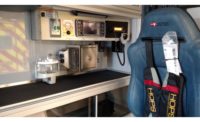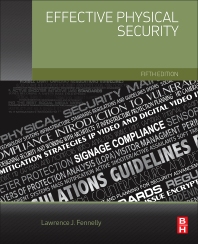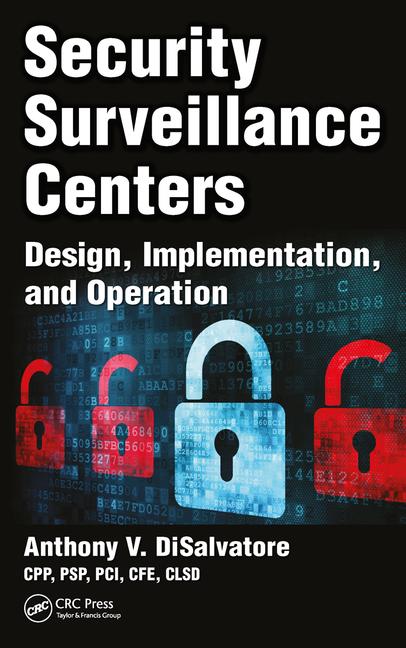IP Emergency Communications Create ‘Open & Secure’ Protection
Securing a public site can be a tough balancing act. Bank vault-style access control isn’t appropriate — the site has to feel both open and secure.
The Pittsburgh Oratory is a community organization and gathering place in Pittsburgh’s active university district. The Oratory does not use a badge system or employ security guards. Volunteers staff the front desk and answer the phone.
When the Oratory decided to upgrade its security and emergency preparedness, it turned to its long-time systems integrator, Intertech Security, for help.
Intertech had previously designed and installed the Oratory’s video and alarm systems, and now monitors the Oratory site from its Global Security Operations Center in Johnstown, Pa.
“It is very important to our customer that they maintain an open, welcoming feel,” said Matt Petnuch, vice president of sales and marketing for Intertech Security. “They wanted a cost-effective security and emergency solution that would provide full-time protection for guests and staff, without creating physical or virtual access barriers that might deter new or returning visitors.”
After reviewing the Oratory’s life safety needs and budgetary requirements, Petnuch and his team designed an IP-based emergency help system, using hardware and software from Metis Secure Solutions. The scalable, multi-purpose system covers the two primary life safety communications functions: it provides a way to reach everyone at the site in seconds, with emergency alerts and voice instructions; and it enables anyone at the site to press a button and reach help.
One other key system feature: it can be managed and activated by multiple people on- or off-site. This enables Intertech to monitor and operate the Oratory’s system from its Global Security Operations Center 65 miles away.
Designing/Installing the System
With cost in mind, Intertech designed the system to cover high-priority areas of the Oratory where visitors spend most of their time. These include the public areas on the first two floors of the building, plus an outdoor area.
Intertech installed Metis Secure Emergency Help Stations both inside and outside the building. Each station has a help button that anyone can press to immediately reach and speak with Intertech’s Security Operations Center personnel via a hands-free, live voice connection. The system software alerts the dispatcher that a call is coming in, and automatically displays the caller’s location on an on-screen map. The dispatcher then speaks with the caller through a built-in computer microphone, USB microphone or headset, and alerts first responders if necessary.
Security Operations Center personnel can also send emergency alerts and voice instructions to one or all stations, which sound alarms, flash lights, and broadcast emergency voice instructions at 90 decibels. Every help station includes a built-in LCD screen, which displays emergency instructions in text form for people with hearing impairments.
The Oratory’s wall-mounted help stations operate on its existing local area network; each is tied into the network via Ethernet cable. Indoors, the system relies on Power over Ethernet (PoE); outdoors, the low voltage system ties into the building’s 120v power.
For the system’s head end, Intertech hosts the Metis Secure Command Center software at its Security Operations Center. The software includes a standard package of pre-recorded, pre-configured emergency alerts and voice instructions. Custom alerts and instructions can be sent on the fly using text to speech. The system is fully supervised — the software immediately alerts system operators to power outages, tamper events or other issues.
“The Metis Secure system is a straightforward installation that’s easy to expand,” Petnuch said. “If the Oratory later decides to extend coverage to the administrative and residential parts of the site, we can simply install additional help stations at key locations. The software automatically detects the new stations, so once we assign IP addresses and on-screen map locations, we’re ready to go.”
Managing Life Safety
Intertech is now responsible for monitoring system operation, responding to help calls, and activating emergency alerts and instructions if necessary. This frees the Oratory from having to allocate full-time, dedicated staff to oversee the system.
While it may seem unusual for a security company to handle its customers’ emergency notification needs, Petnuch sees it as a logical part of Intertech’s Security Operations Center offerings.
“It’s not uncommon for our Security Operations Center to monitor and respond to emergency calls for help, and emergency notification is a natural extension of that,” Petnuch said. “Dispatchers responsible for answering emergency help calls are often the first to know if there is a crisis at a customer location that requires others at the site to be alerted. And with multi-purpose IP systems such as Metis Secure’s, dispatchers can respond to an emergency call and then activate an alert at the customer’s site in seconds, from the same interface screen.”
According to Petnuch, managed emergency communications and notification services represent a significant growth area for the company. “Emerging, multi-use communications systems are helping us to protect our customers and their people more effectively,” he said. “In the process, we are leveraging our Security Operations Center investment and building a valuable new recurring revenue stream.”
For more information, visit www.intertechsecurity.com and www.metissecure.com.
PROJECTS in the News
Electronix Systems CSA Inc., Huntington Station, N.Y., fosters long-term relationships with its customers, leading to large-scale projects. With a 12-year relationship in place, Electronix Systems recently completed a fire installation encompassing 52 buildings at Cold Spring Harbor Laboratory (CSHL), an international research institution. The project was a campus scenario, describes Larry Huff, vice president, for Electronix Systems and president of the Long Island Fire Alarm Association. Founded in 1890, CSHL is an independent research and education institution working on “breakthroughs that shape contemporary molecular biology and genetics and enhance scientific knowledge worldwide,” according to the school.
Huff shares that Notifier was the primary manufacturer for the fire alarm system, while DMP was chosen for the security system. Card access equipment is a networked system provided by Continental Instruments, which connects to the campus security office’s head-end server.
The Notifier system, a requirement from the end user, has in excess of 800 smoke detectors. The system is also fully addressable. The DMP security systems are monitored at Electronix Systems’ central station.
“Each building has independent systems that report on either Internet or radio,” says Huff. “The biggest thing is the support personnel. Our design team is NICET certified and has more than 15-years’ experience, which helps meet the requirements of the local AHJs, the Nassau County Fire marshals, which are among the toughest AHJs in the industry.” Electronix Systems has been providing security-related services throughout the New York Metro area and working with the AHJs there more than 33 years.
Huff describes the relationship the company has built with CSHL during the last 12 years as “very solid. They understand and are conformable with our service and our knowledge, knowing we will meet and exceed their needs,” Huff adds.
In order to maintain its high level of service, Electronix Systems considers the project as ongoing. “We have a man onsite every day,” Huff says. The company has set up an office at the site to deal with service and inspection, another big ongoing piece of the project. For information on Electronitx Systems’ work, visit www.electronixsystems.com.
■ ■ ■
Viscount Systems, a supplier of security systems and software, announced the company received confirmation to secure 30 high-rise apartment buildings in Canada. The first orders were shipped in February. The projects are for MESH Touch Screen intercom systems with the ability to upgrade to Freedom access control and other Viscount applications. The value of the MESH Touch Screen orders will be approximately $150,000.
PROJECTS in the News
Brivo Systems LLC, a provider of cloud applications for security management, announced that Nor-Cal Beverage Co. Inc., Anaheim, Calif., selected Brivo’s ACS WebService cloud-based access control system to manage access for several distributed facilities. Tyco Integrated Security is the dealer and installer for the project.
“Due to the changes in the bioterrorism laws, we determined that our building security should be updated to combat bioterrorism threats, so we fenced in our property and we deployed the Brivo system to manage access for all personnel entering our facilities,” said Marcy Mackie, office manager, Nor-Cal Beverage.
Between the Anaheim production facility and the Fullerton distribution center, Brivo is installed in a total of five buildings, managing all critical access points. The Brivo system manages key external doors and two parking areas, along with internal access points.
■ ■ ■
MicroPower Technologies Inc., a provider of wireless surveillance solutions, announced that the American Airlines Center, working with systems integrator Global Security Integration, selected the MicroPower Helios™ solar, wireless surveillance solution for its parking lot and perimeter surveillance.
Located in Dallas, the American Airlines Center hosts the Dallas Stars hockey team, Dallas Mavericks basketball team and countless entertainment events as a sports and entertainment venue. Joe Heinlein, IT director, American Airlines Center, sought a surveillance solution to monitor 13 access points within the facility’s surrounding parking lots.
“We wanted greater security for both customers and venue employees, while gaining better visibility of parking collections to compare vehicle counts with parking revenues,” Heinlein said. “We needed a surveillance camera placed directly at critical points of interest to transmit real-time video back to a central monitoring location. Because the parking lots are covered in asphalt and cement, and some are as far away as a quarter-mile from the center, trenching and running cables was extremely cost-prohibitive.”
PROJECTS in the News
CNL Software, a provider of physical security information management (PSIM) software, and e-Thele SQD Networks, are working together to provide a comprehensive security management system for a global mining organization for its operations in South Africa.
Illegal mining operations cost South Africa an estimated $5 billion per year. As well as the loss of property, illegal mining activities also have a negative effect on the mining organization’s safety record as the death or injury of illegal miners is seen as a safety breach.
IPSecurityCenter integrates security systems across the mining estate including abandoned mines and areas where it is not possible to have security staff on the ground at all times. The systems provides control room operators with real-time situation awareness, through a common operating picture (COP) and following an alert, alarm or trigger. IPSecurityCenter presents step-by-step process guidance, directing rapid response teams over vast areas both above and below ground ensuring complete compliance to organizational security and health and safety policies.
“The first phase of this mine project will integrate the organization’s video surveillance capability as well as legacy technologies including access control, physical alarm systems, SCADA, perimeter intrusion detection and video analytics technologies”, explains Wolfgang Engling, managing director of e-Thele SQD Networks.
■ ■ ■
When the University of Kentucky sought a solution to increase security and help protect its students, faculty and support staff, with the assistance of Dallman Systems and BCCLT Consulting Engineers, it chose a number of solutions from Next Level Security Solutions, a developer of unified, networked security solutions based in Carlsbad, Calif.
The overall University of Kentucky solution includes more than 2,000 video cameras, with access cards distributed to more than 40,000 individuals.
With its 800-plus-acre campus environment comprising hundreds of buildings and the University of Kentucky Medical Center, the university can now provide its security personnel with the ability to correlate video surveillance, analytics alerts and access control data into a single interface.
The 11 analytics built into the NLSS Gateway will provide real-time alerts based on customized parameters. To further streamline awareness and system management, the NLSS Gateway will be integrated with the university’s mass notification system and Talk-A-Phone emergency call stations. Because the NLSS Gateway is browser-based, the university can also take advantage of NLSS Cloud Services to enable remote access and multi-site security management from any location.








